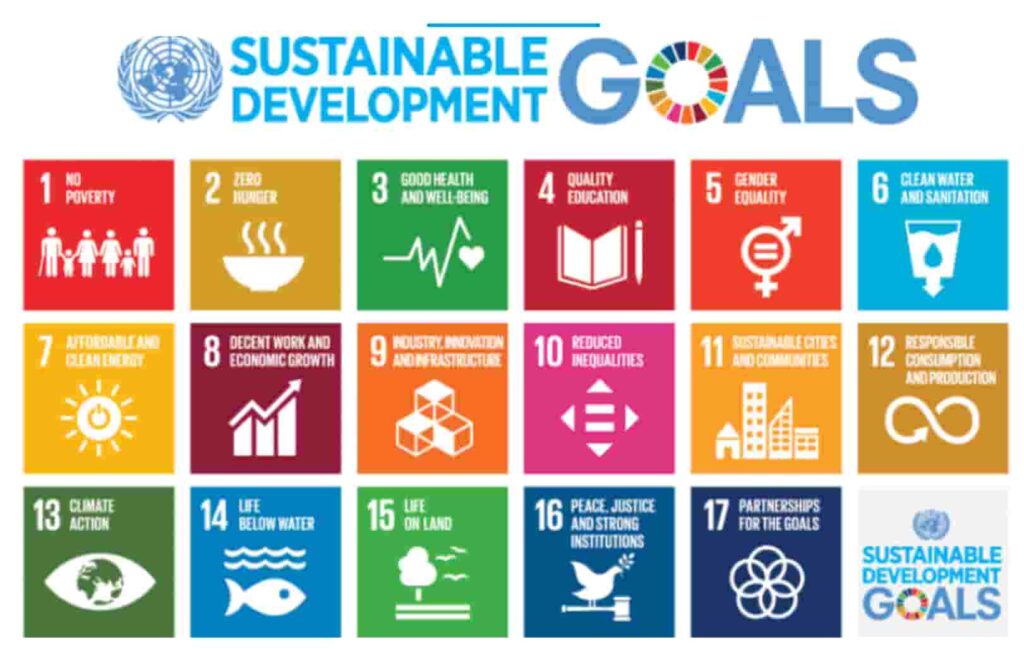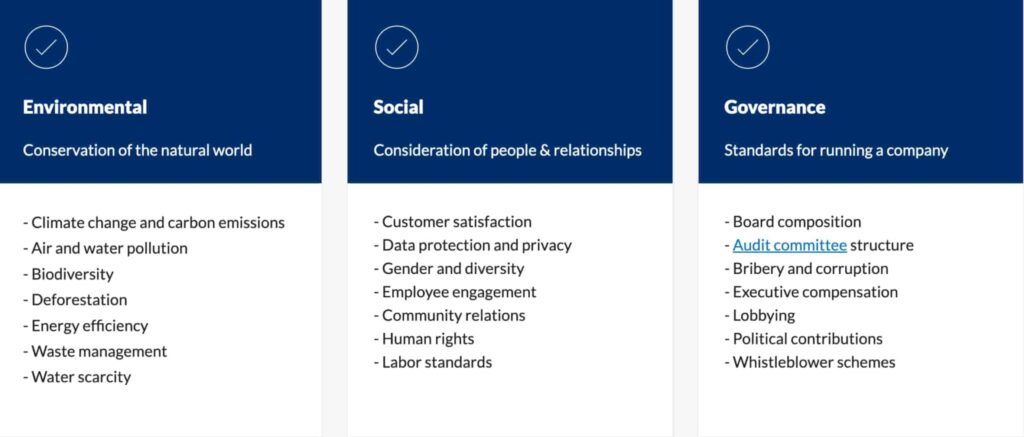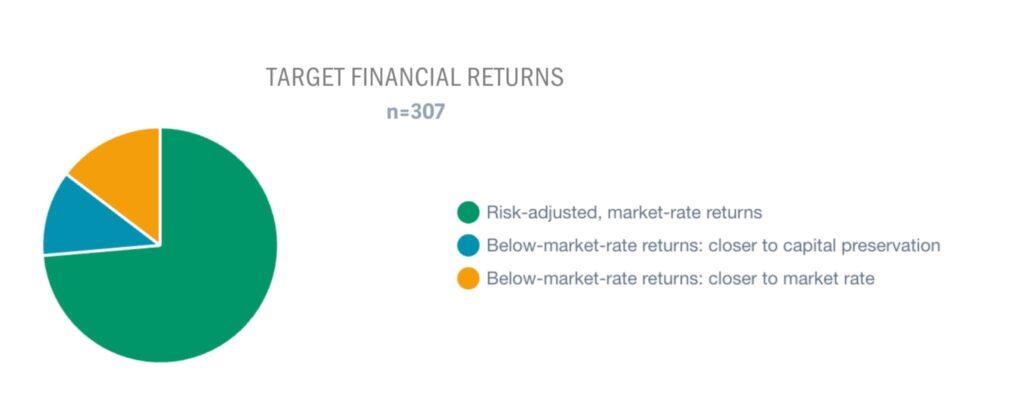As concerns about environmental degradation and social disparity become increasingly prominent, many investors are turning to ethical investment strategies to generate both lucrative financial and positive social returns. This guide will examine impact investing, how it works, who it’s for, its main avenues, the purpose of this particular investment approach as well as some of the challenges it faces.
Highly Rated Stock Trading & Investing Platform
-
Invest in stocks, ETFs, options and crypto
-
Copy top-performing crypto-traders in real time, automatically.
-
0% commission on buying stocks - buy in bulk or just a fraction from as little as $10. Other fees apply. For more information, visit etoro.com/trading/fees.
-
eToro USA is registered with FINRA for securities trading.
Impact investing definition
Impact investments, depending on investors’ strategic goals, can be made in emerging and developed markets and target a variety of returns from below market to market rate. By generating profits from an innovative business model, a company can pay financial returns to investors alongside doing something useful for the world.
The impact investment market provides funds to address the world’s most urgent challenges in areas such as sustainable agriculture, green energy, conservation, microfinance loans, and affordable and accessible essential services, including housing, education, and health care.
The majority of impact investing is conducted by institutional investors, including hedge funds, banks, private foundations, and pension funds. However, various socially conscious financial service companies, web-based investment platforms, and investor networks now offer individuals an opportunity to get involved, too.
How does impact investing work?
Impact investing works by investing in companies that have turned environmental protection or social progress goals into business opportunities. By attracting capital and entrepreneurial talent to companies that create positive change impact investing methods can contribute to more sustainable economic development
The type and development stage of companies in a portfolio can also determine the degree of the impact. For example, investors may have the most significant impact when they help fund early-stage companies to get genuinely innovative ideas materialized or by selecting companies and projects in emerging nations (where capital is scarce).
The purpose of impact investing
Impact investing can challenge long-held beliefs that social and environmental issues should be addressed only by philanthropic donations and that market investments should merely aim toward producing financial gain.
Impact investing can offer investors greater freedom and flexibility to test innovative ways to achieve a financial return as they seek to impact general or specific social or environmental causes. Impact investing can be a valuable tool for a variety of investors, including:
- Institutional and family foundations to leverage philanthropic dollars, where investment returns can be reused repeatedly to compound the impact;
- Philanthropists to complement or redesign their investment strategies;
- Government investors and development finance institutions to provide proof of financial viability for private-sector investors while targeting social and environmental goals.
Sustainable Development Goals and impact investing
The 2030 Agenda for Sustainable Development, adopted by all United Nations Member States in 2015, offers a guideline for peace and prosperity for people and the planet. At its core are the 17 Sustainable Development Goals (SDGs), which are an urgent call for action for all developed and developing countries.

Impact investing depends on measuring the specific change an investor’s investments have enabled. Most impact-focused investing methods allow investors to target economic activities that address particular sustainability challenges outlined by the United Nations SDGs.
Investors who want to make a measurable impact can use the SDGs as a directory to decide where best to put their money to work.
Who is impact investing for?
Impact investment has attracted a large variety of individual and institutional investors. They include:
- Fund managers;
- Development finance institutions;
- Diversified financial institutions/banks;
- Private foundations;
- Pension funds and insurance companies;
- Family Offices;
- Individual investors;
- NGOs;
- Religious institutions.
The full scope of participants in the impact investing world are as follows:

Examples of impact investing firms
Vital Capital Fund: Vital Capital Fund is a private equity fund focusing on emerging areas, principally sub-Saharan Africa. Their primary investment focuses on developing infrastructure, housing, agro-industrial projects, renewable energy, health care, and education.
Triodos Investment Management: Triodos Investment Management is a subsidiary of Triodos Bank and one of the founding members of the Global Impact Investing Network, managing a dozen sustainable investment funds. With its investments spread throughout Europe, South America, Africa, and Southeast Asia, the main areas of interest include sustainable food and agriculture, green energy, health care, and education.
Reinvestment Fund: The Reinvestment Fund is a non-profit community development financial institution operating primarily by assisting distressed neighborhoods and communities in the United States. The fund finances housing projects, access to health care, educational programs, and job initiatives. Additionally, it provides U.S. cities with public policy advice and data analysis services to assist in developing community initiatives.
Highly Rated Stock Trading & Investing Platform
-
Invest in stocks, ETFs, options and crypto
-
Copy top-performing crypto-traders in real time, automatically.
-
0% commission on buying stocks - buy in bulk or just a fraction from as little as $10. Other fees apply. For more information, visit etoro.com/trading/fees.
-
eToro USA is registered with FINRA for securities trading.
Core characteristics of impact investing
The Global Impact Investing Network (GIIN) defines the four core elements of impact investing as:
- Intentionality: An investor’s intention to achieve positive social or environmental impact through investments is essential to impact investing;
- Evidence-based investment design: Investments need to apply evidence and impact data to drive intelligent investment design that will be valuable in contributing to social and environmental objectives;
- Performance measurement: Impact investing has a specific intention and necessitates that investments be managed towards that intention, including having feedback loops in place and communicating performance information to support others in the investment chain to work towards impact;
- Contribution toward the industry’s growth: A trademark of impact investing is the investor’s duty to monitor and communicate the social and environmental performance and progress of investments, ensuring transparency and accountability while advising fellow investors and building the field.
Types of investements
Like any investment class, impact investments provide investors with various possibilities regarding returns and come in many forms of capital and investment vehicles. Essentially, any investment aiming for a financial profit as well as positive social or environmental results could be regarded as a form of impact investing.
Impact investing offers diverse investment opportunities in various markets, including emerging markets (EM) or developed economies. In addition, impact investments span several industries, such as healthcare, education, energy (particularly clean and renewable energy), and agriculture.
Some examples of impact investing include:
- Buying the stock of a technology company that’s looking to develop better water treatment and purification techniques;
- Investing in mortgage-backed securities whose objective is to fund affordable housing for low-income neighborhoods;
- Setting up private investment notes to finance resources for low-income communities (i.e., substance abuse treatment facilities and employment centers);
- Providing loans to small business owners in developing countries through a microfinance impact fund.
Other responsible investing strategies
Impact investing is not the only investment strategy to support positive social and environmental values. The growing demand has fueled an accumulation of funds and methods incorporating ethical considerations into the investment process.
Environmental, social, and governance (ESG), socially responsible investing (SRI), and impact investing are industry terms often used interchangeably, assuming they all describe the same approach. However, these terms have subtle differences in meaning.
While impact investing aims to help a business or organization produce a social benefit and is more proactive in creating positive change, ESG investing focuses more on avoiding poorly scoring investments. In addition, SRI is generally even more exclusionary, meaning specific investments are restricted if they are incompatible with a defined set of principles or ethical guidelines.
Environmental, social, and governance (ESG)

Socially responsible investing (SRI)
Socially responsible investing (SRI) goes further than ESG by actively eliminating or selecting investments according to particular ethical guidelines. The underlying motive can be religion, personal values, or political beliefs. For example, an investor might prefer to avoid any mutual fund or exchange-traded fund (ETF) that includes stocks of alcohol or tobacco manufacturers. Alternatively, investors might pursue companies that donate a high percentage of their revenue to charitable causes.
Financial performance of impact investing
Impact investors have mixed financial return expectations. For example, some purposefully invest for below-market-rate returns, in line with their strategic objectives. In contrast, others pursue market-competitive and market-beating returns, sometimes mandated by fiduciary responsibility. However, according to the GIIN’s 2023 Annual Impact Investor Survey, most investors seek competitive, market-rate returns.

In addition, surveyees (88%) also reported that portfolio performance met or exceeded expectations for both social and environmental impact and financial gains in investments spanning emerging and developed markets, as well as the market as a whole.
Even though only a small number of investors report significant risk events in their portfolios, business model execution and management is undoubtedly the most often cited contributor to risk.
Results of impact investing
The success of impact investing is a complex matter. For example, let’s imagine an impact investor who, to promote environmental benefits, invests in a company’s stock in the green transportation industry. Now, let’s assume that the business they decide to invest in is, in fact, one that performs comparatively poorly to its opponents in the industry.
So, the money it will receive from the impact investor ultimately enables it to overpower its competitors producing a situation where a company that does a measly job providing sustainable transportation becomes the dominant company in the industry.
Further problems in evaluating the impact of impact investing stem from the fact that impact investments often lack methods for measuring the tangible effects that corporate social or environmental policies provide. As a result, many companies’ commitment to socially or environmentally responsible practices is often just a commitment, with little or no action.
On the other hand, impact investing allows investors to communicate that they support the message and mission of the business in which they’re investing and are committed to the company’s welfare. Therefore, as more people discover the social and financial benefits of impact investing, more companies will be incentivized to engage in social responsibility.
Pros and cons of impact investing

Pros
- Solid return: An overwhelming majority of impact investors report that their portfolio performance met or exceeded expectations for both social and environmental impact and financial profit;
- Investments can be aligned with your standards: Impact investing allows investors to put their capital toward social or environmental change. By investing according to your ethical values, you’re actually putting your money where your mouth is;
- You’re using your leverage. You’re the one calling the shots by deciding who gets your money based on ethical behaviors. For example, you can keep your money away from companies that don’t morally align with your standards (i.e., you’re anti-gun and, as such, keep your money away from weapon manufacturers);
- You know where your money goes: The money you set aside for investments is going to companies that operate by the beliefs you favor. Rewarding companies that value, for instance, green energy, building up marginalized communities, or decent pay, means you’re steering your cash to the companies that can use that money to further those causes;
- Investments don’t work against you: For philanthropic investors, impact investing can ensure their investments align with their charitable values without undermining their grantmaking strategies.

Cons
- Risk: As with any investments, impact investments come with different levels and types of risk. Ultimately, for a company to drive for impact along with financial profit is arguably more ambitious than purely focusing on the traditional profit-making objectives;
- Lack of deals & strategies: The supply of investment opportunities offering scale, impact, and financial return sometimes falls behind of demand. As a result, it can be difficult for impact investors to find deals that fit their investment criteria and philanthropic orientation. Additionally, once an investment is made, finding an attractive exit strategy can be challenging;
- Lack of expertise & market fragmentation: Unfortunately, many financial advisors are not competent in the social aspects of impact investing. Equally frustratingly, many philanthropic advisors lack knowledge in making financial investments. As a result, it can be challenging to build a team with the requisite expertise in both impact and financial return;
- Primitive measurement techniques: While there have been great strides in standards for impact investment performance, coordinating an industry standard of impact measurement (as with traditional investment analysis) has proven difficult;
- Risk of greenwashing: Not every company claiming to be socially responsible is so. Marketing plays a significant role in upholding the facade of social responsibility and is an expert at misleading investors.
Conclusion
To conclude, impact investing has surged in recent years as investors look to direct capital to ventures expected to yield both social and environmental benefits and profits. The strategy is seen as putting your money to work in a way that helps achieve something positive for society. So, if you’re passionate about social causes and aim to “do well while doing good,” this investment approach might be the right one for you.
On the other hand, as impact investing has grown, so have concerns over the integrity of so-called sustainable investments. For example, the practice is undermined by some companies who claim to participate in it for their marketing purposes or those who misunderstand it and can threaten to undo all the progress made so far in responsible investing.
So while impact investing has the potential to bring more capital and fresh approaches to targeted issue areas, before you start making impact investments, research carefully to ensure that the organization or company you wish to invest in truly delivers on societal value. Therefore, given the lack of consistent standards regarding impact investing (as well as ESG and SRI), you may wish to consult an expert when navigating this method.
Disclaimer: The content on this site should not be considered investment advice. Investing is speculative. When investing, your capital is at risk.
FAQs about impact investing
What is impact investing?
Impact investing is an investment approach that aims to achieve social or environmental objectives without sacrificing performance. Investors who follow impact investing look at a company’s commitment to corporate social responsibility or dedication toward various global issues. However, unlike philanthropic endeavors, impact investors typically expect a return on their investment, even though this may be a secondary consideration.
Considering the impact of inflation, why is investing important?
Investing is crucial in the context of inflation because it provides an opportunity to grow your wealth at a rate that potentially outpaces inflation. By investing wisely, you can maintain or increase the purchasing power of your money over time, whereas keeping money in low-interest-bearing accounts may result in a loss of value due to the rising cost of goods and services.
Why is impact investing important?
Impact investing is important because it allows investors to contribute positively to social and environmental causes while also seeking financial returns. It goes beyond mere financial gain, enabling investors to play a role in addressing global challenges such as climate change, social inequality, and sustainable development, thereby aligning their investment choices with their values and ethical beliefs.
How to get into impact investing?
To get started with impact investing, begin by defining your impact goals and financial objectives. Research and identify investment opportunities that align with these goals, such as socially responsible mutual funds, green bonds, or companies with strong ESG practices. Consider consulting with a financial advisor experienced in impact investing to help navigate and tailor your investment choices.
What is the difference between sustainable investing vs impact investing?
Sustainable investing focuses on investing in companies or projects that are considered sustainable in terms of ESG criteria. Impact investing, while similar, goes a step further by actively seeking to generate positive, measurable social and environmental impact alongside a financial return. Impact investments are often more directly focused on specific outcomes, such as reducing carbon emissions or improving education in underprivileged areas.
What is the difference between impact investing vs ESG?
ESG investing involves screening investments based on specific Environmental, Social, and Governance criteria, making it a broader approach that integrates ESG factors into investment decisions. Impact investing, on the other hand, not only considers ESG criteria but also aims to generate a specific, measurable positive impact on society or the environment, often with a more focused and proactive approach.
How does impact investing work?
Impact investing works by directing capital to enterprises or initiatives that generate positive social or environmental impacts, along with financial returns. This can be achieved through various investment vehicles such as stocks, bonds, funds, or private equity in companies, organizations, and funds that are committed to addressing global challenges. The performance of impact investments is measured not only in financial terms but also by the tangible societal or environmental benefits they create.
What are some of the top impact investing firms?
The ImpactAssets 50 (IA 50) list is a key resource for identifying top impact investing firms. It categorizes firms into three groups: core IA 50 list, IA 50 Emerging Impact Managers list, and IA 50 Emeritus Impact Managers list. In 2023, the IA 50 included 163 impact fund managers, managing a total of $122.48 billion across various asset classes and impact themes.
How do impact investing strategies differ from traditional investments?
Unlike traditional investments that primarily focus on financial returns, impact investing strategies also aim to achieve positive social and environmental outcomes. These strategies are more holistic, considering the broader impact of investments on society and the environment.
Are there any risks associated with impact investing strategies?
Like any investment, impact investments carry risks. These can include market risks, liquidity risks, and risks specific to the sectors or regions in which the investments are made. However, due diligence and a strategic approach can mitigate these risks.
Can impact investing strategies be profitable?
Yes, impact investing strategies can be profitable. Many impact investments target market or above-market rates of return, and a significant percentage of impact fund managers report delivering returns in line or above their initial targets. The focus on sustainability and social responsibility can also drive long-term profitability and resilience.
Highly Rated Stock Trading & Investing Platform
-
Invest in stocks, ETFs, options and crypto
-
Copy top-performing crypto-traders in real time, automatically.
-
0% commission on buying stocks - buy in bulk or just a fraction from as little as $10. Other fees apply. For more information, visit etoro.com/trading/fees.
-
eToro USA is registered with FINRA for securities trading.





